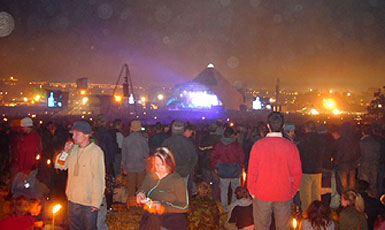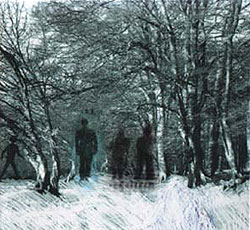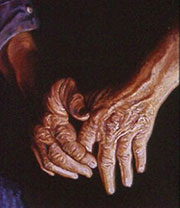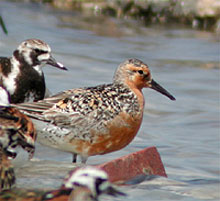Issue
No.14 - Into New Lands
The
teacher must orient his work not on yesterday's
development in the
child but on tomorrow's.
– Lev
Vygotsky
Contents
The
Stage meets Life
When fiction meets reality
An
Obituary for a Concept
Creatively exploring concepts
At
the Edge of the Event
In the realm of disinterest and distance
Being
a Child
A world once lived
A
Father’s Hands
Living with ability/disability
The
Day Our Son is Due
What happens at shared moments
Who
Owns Matilda?
Other sides to songs
A
Music Maverick
Confronting sound
Taking
Cinema Beyond
Being true to a vision
Subterranean
Spaces
A world beneath
In
Search of Southern Lights
The effect of a light show
Bring
on the Media Manipulators
Who is doing what?
When
Old Images Resonate
Using multi-media to create new meanings
An
autumn leaf floating
The beauty in teaching
Welcome
to Edition # 14 of The Creative Teaching Space.
Once
again I pursue an interest in strategies that may open learning possibilities.
I draw ideas
from many sources on the Internet, from my travels, and ideas mentioned
by other people. Some people may call my role as that of a conduit.
Whatever
your response to these strategies continue to explore new possibilities
in teaching and learning. The field is endless. Even the simplest of ideas
may motivate a student on his or her own path of discovery. Artists, writers,
etc, build ideas upon sustained thought. The simplest of ideas may become
a beautiful bridge that takes us to a new land of opportunity!
The
Stage meets Life

I have recently been
reading the lovely poetry of Wislawa Szymborska. This acclaimed winner
of the 1996 Nobel Prize for Literature, who gave an interesting acceptance
speech, writes in Polish and is well translated in a number of editions
of collected work. I have Poems
New and Collected, Harcourt, 1998.
Wislawa Szymborska’s
poetry is often built upon a central concept. Her work would be valuable
for teachers and students who wish to investigate how important concepts
can be explored through prose.
In a number of poems
Wislawa Szymborska writes about a strange connection between theatre and
everyday life. In Theatre Impressions she explores the importance
of the Act Six of a play, where the actors take the curtain call and bow
to the crowd:
The
bows in pairs –
rage extends its arms to meekness,
the victim’s eyes smile at the torturer,
the rebel indulgently walks beside the tyrant.
………………………………………………
Now enter, single file, the hosts who died earlier on,
In Acts 3 and 4, or between scenes.
And here I am reminded
of a similar reference in a song by Laurie
Anderson.
One
Beautiful Evening
It's
like at the end of the play and all the actors come out
And they line up and they look at you.
And horrible things have happened to them during the play
And they stand there while you clap and now what?
What happens next?
What ironies can
we find in the junction where the world of fiction meets reality?
An Obituary for a Concept

Increasingly as teaching
focuses on concepts so we need to remain sensitive to creative ways of
exploring concepts.
Here is an idea that
came to me via a joke email. Take note of how joke emails can be used
in learning!
A concept such as
Common Sense is given an obituary. What other concepts can have an obituary?
Ask students to investigate how obituaries are written. Then ask them
to take a figurative leap. You can even ask students to dissect the values
underpinning each obituary. There are certainly a range of values within
the following piece that deserve dissection.
C.
Sense (Birth date Unknown)
Today
we mourn the passing of a beloved old friend by the name of Common Sense
who had been with us for many years. No one knows for sure how old he
was since his birth records were long ago lost in bureaucratic red tape.
He
will be remembered as having cultivated such value lessons as knowing
when to come in out of the rain, why the early bird gets the worm and
that life isn't always fair. Common Sense lived by simple, sound financial
policies (don't spend more than you earn) and reliable parenting strategies
(adults, not kids, are in charge).
His
health began to rapidly deteriorate when well intentioned but overbearing
regulations were set in place. Reports of a six-year-old boy charged
with sexual harassment for kissing a classmate; teens suspended from
school for using mouthwash after lunch; and a teacher fired for reprimanding
an unruly student, only worsened his condition. It declined even further
when schools were required to get parental consent to administer aspirin
to a student; but could not inform the parents when a student became
pregnant and wanted to have an abortion.
Finally,
Common Sense lost the will to live as the Ten Commandments became contraband;
churches became businesses; and criminals received better treatment
than their victims. Common Sense finally gave up the ghost after a woman
failed to realize that a steaming cup of coffee was hot, she spilled
a bit in her lap, and was awarded a huge settlement.
Common
Sense was preceded in death by his parents, Truth and Trust, his wife,
Discretion; his daughter, Responsibility; and his son, Reason.
He is survived by two stepbrothers; My Rights and Ima Whiner. Not many
attended his funeral because so few realized he was gone.
If
you still know him pass this on, if not join the majority and do nothing.
At the Edge of the Event


I recently saw the
documentary Meeting People is Easy: A Film by Grant Gee about Radiohead. Radiohead being
the English rock group.
As I was viewing Meeting People is Easy I came across a fascinating scene. Radiohead
are seen performing their hit song Creep live on stage. Instead
of seeing a close up of the band the camera is positioned well outside
the space of the stage. It is in the foyer. We see the band silhouetted
in the distance and we see people coming and going. Some are perhaps going
to the toilet; some may be talking to friends. What is fascinating is
the director’s choice to film the performance from a distance.
How often do we see
close up band performances and over-excited crowds? The above scene is
quite distant and matter of fact. It brought to my attention the idea
of being at the edge of an event. There is always that edge of
the event: the policeman standing in the wings, the bored audience member
or the technician with other priorities.
What happens if we
take that step back from an event, to its edges? What do we find? What
does this tell us about the event, how we focus on events, and on the
diversity of people? We know that Tom Stoppard fore-grounded the two minor
characters from Hamlet, Rosencrantz and Guildernstern, in his play Rosencrantz
and Guildernstern are Dead.
How could we open
learning possibilities by changing focus?
Being a Child

The following song
on the tail end of the album The Philosopher’s Stone, by Van Morrison,
an album of out-takes, is an evocative spoken word tribute to childhood.
Written by Peter
Handke and sung/spoken by, it contains many views of childhood.
Students may wish
to explore how the experience of being a child is different from their
current experience. What changes? Why? Can these changes be explored creatively
in e.g. a similar poem/song?
Song
of Being a Child
When
the child was a child….
It
walked with arms hanging
Wanted the stream to be a river and the river a torrent
And this puddle, the sea
When the child was a child, it didn't know
It was a child
Everything for it was filled with life and all life was one
Saw the horizon without trying to reach it
Couldn't rush itself
And think on command
Was often terribly bored
And couldn't wait
Passed up greeting the moments
And prayed only with its lips
When the child was a child
It didn't have an opinion about a thing
Had no habits
Often sat crossed-legged, took off running
Had a cow lick in its hair
And didn't put on a face when photographed
When
the child was a child
It was the time of the following questions
Why am I me and why not you?
Why am I here and why not there?
Why did time begin and where does space end?
Isn't what I see and hear and smell
Just the appearance of the world in front of the world?
Isn't life under the sun just a dream?
Does evil actually exist in people?
Who really are evil?
Why can't it be that I who am
Wasn't before I was
And that sometime I, the I, I am
No longer will be the I, I am?
When
the child was a child
It gagged on spinach, on peas, on rice pudding
And on steamed cauliflower
And now eats all of it and not just because it has to
When the child was a child
It woke up once in a strange bed
And now time and time again
Many people seem beautiful to it
And now not so many and now only if it's lucky
It had a precise picture of paradise
And now can only vaguely conceive of it at best
It couldn't imagine nothingness
And today shudders in the face of it
Go for the ball
Which today rolls between its legs
With its I'm here it came
Into the house which now is empty
When
the child was a child
It played with enthusiasm
And now only with such former concentration
Where its work is concerned
When the game, task, activity, subject happens to be its work
When
the child was a child
It was enough to live on apples and bread
And it's still that way
When the child was a child berries fell
Only like berries into its hand
And still do
The fresh walnuts made its tongue raw
And still do
Atop each mountain it craved
Yet a higher mountain
And in each city it craved
Yet a bigger city
And still does
Reach for the cherries in the treetop
As elated as it still is today
Was shy in front of strangers
And still is
It waited for the first snow
And still waits that way
When the child was a child
It waited restlessly each day for the return of the loved one
And still waits that way
When the child was a child
It hurled a stick like a lance into a tree
And it's still quivering there today
The
child, the child was a child
Was a child, was a child, was a child, was a child
Child, child, child
When the child, when the child, when the child
When the child, when the child
The child, child, child, child, child
And
on and on and on and on and onward
With a sense of wonder. Upon the highest hill
Upon the highest hill
When the child was a child
Are you there
Shassas, shassas
Up on a highest hill
When the child was a child, was a child, was a child
Was a child, was a child, was a child (Fade to end)
A Father’s Hands

The following story My Father’s Hands by Calvin R. Worthington, is an evocative story
detailing one man’s experience of illiteracy. Moving, and tragic, it shows
the impact that reading – or its lack – has on a person’s life.
Students may like
to use this story as a starting point to discuss how we learn in life.
What impact does a disability have on a person? How do people overcome
these disabilities?
My
Father’s Hands
Calvin
R. Worthington
His
hands were rough and exceedingly strong. He could gently prune a fruit
tree or firmly wrestle an ornery mule into harness. He could draw and
saw a square with quick accuracy. He had been known to peel his knuckles
upside a tough jaw. But what I remember most is the special warmth from
those hands soaking through my shirt as he would take me by the shoulder
and, hunkering down beside my ear, point out the glittering swoop of
a blue hawk, or a rabbit asleep in its lair. They were good hands that
served him well and failed him in only one thing: they never learned
to write.
My
father was illiterate. The number of illiterates in our country has
steadily declined, but if there were only one I would be saddened, remembering
my father and the pain he endured because his hands never learned to
write. He started first grade, where the remedy for a wrong answer was
ten ruler strokes across a stretched palm. For some reason, shapes,
figures, and recitations just didn’t fall into the right pattern inside
his six-year-old towhead. Maybe he suffered from some type of learning
handicap such as dyslexia. His father took him out of school after several
months and set him to a man’s job on the farm.
Years
later, his wife, with her fourth-grade education, would try to teach
him to read. And still later I would grasp his big fist between my small
hands and awkwardly help him trace the letters of his name. He submitted
to the ordeal, but soon grew restless. Flexing his fingers and kneading
his palms, he would declare that he had had enough and depart for a
long, solitary walk.
Finally,
one night when he thought no one saw, he slipped away with his son’s
second-grade reader and labored over the words, until they became too
difficult. He pressed his forehead into the pages and wept. "Jesus—Jesus—not
even a child’s book?" Thereafter, no amount of persuading could
bring him to sit with pen and paper.
From
the farm to road building and later factory work, his hands served him
well. His mind was keen, his will to work unsurpassed. During World
War II, he was a pipefitter in a shipyard and installed the complicated
guts of mighty fighting ships. His enthusiasm and efficiency brought
an offer to become line boss—until he was handed the qualification test.
His fingers could trace a path across the blueprints while his mind
imagined the pipes lacing through the heart of the ship. He could recall
every twist and turn of the pipes. But he couldn’t read or write.
After
the shipyard closed, he went to the cotton mill, where he labored at
night, and stole from his sleeping hours the time required to run the
farm. When the mill shut down, he went out each morning looking for
work—only to return night after night and say to Mother as she fixed
his dinner, "They just don’t want anybody who can’t take their
tests."
It
had always been hard for him to stand before a man and make an "X"
mark for his name, but the hardest moment of all was he placed "his
mark" by the name someone else had written for him, and saw another
man walk away with the deed to his beloved farm. When it was over, he
stood before the window and slowly turned the pen he still held in his
hands—gazing, unseeing, down the mountainside. I went to the springhouse
that afternoon and wept for a long while.
Eventually,
he found another cotton-mill job, and we moved into a millhouse village
with a hundred look-alike houses. He never quite adjusted to town life.
The blue of his eyes faded; the skin across his cheekbones became a
little slack. But his hands kept their strength, and their warmth still
soaked through when he would sit me on his lap and ask me to read to
him from the Bible. He took great pride in my reading and would listen
for hours as I struggled through the awkward phrases.
Once
he had heard "a radio preacher" relate that the Bible said,
"The man that doesn’t provide for his family is worse than a thief
and an infidel and will never enter the kingdom of Heaven." Often
he would ask me to read that part to him, but I was never able to find
it. Other times, he would sit at the kitchen table leafing through the
pages as though by a miracle he might be able to turn to the right page.
Then he would sit staring at the Book, and I knew he was wondering if
God was going to refuse him entry into heaven because his hands couldn’t
write.
When
Mother left once for a weekend to visit her sister, Dad went to the
store and returned with food for dinner while I was busy building my
latest homemade wagon. After the meal he said he had a surprise for
dessert, and went out to the kitchen, where I could hear him opening
a can. Then everything was quiet. I went to the doorway and saw him
standing before the sink with an open can in his hands. "The picture
looked just like pears," he mumbled. He walked out and sat on the
back steps, and I knew he had been embarrassed before his son. The can
read "Whole White Potatoes," but the picture on the label
did look a great deal like pears.
I
went and sat beside him, and asked if he would point out the stars.
He knew where the Big Dipper and all the other stars were located, and
we talked about how they got there in the first place. He kept that
can on a shelf in the woodshed for a long while, and a few times I saw
him turning it in his hands as if the touch of the words would teach
his hands to write.
Years
later, when Mom died, I tried to get him to come live with my family,
but he insisted on staying in his small frame house on the edge of town
with a few farm animals and a garden plot. His health was failing, and
he was in and out of the hospital with several mild heart attacks. Old
Doc Green saw him weekly and gave him medications, including nitroglycerin
tablets to put under his tongue should he feel an attack coming on.
My
last fond memory of Dad was watching as he walked across the brow of
a hillside meadow, with those big, warm hands—now gnarled with age—resting
on the shoulders of my two children. He stopped to point out, confidentially,
a pond where he and I had swum and fished years before. That night,
my family and I flew to a new job and new home, overseas. Three weeks
later, he was dead of a heart attack.
I
returned alone for the funeral. Doc Green told me how sorry he was.
In fact, he was bothered a bit, because he had written Dad a new nitroglycerin
prescription, and the druggist had filled it. Yet the bottle of pills
had not been found on Dad’s person. Doc Green felt that a pill might
have kept him alive long enough to summon help.
An
hour before the chapel service, I found myself standing near the edge
of Dad’s garden, where a neighbor had found him. In grief, I stopped
to trace my fingers in the earth where a great man had reached the end
of his life. My hand came to rest on a half-buried brick, which I aimlessly
lifted and tossed aside, before noticing underneath it the twisted and
battered, yet unbroken, soft plastic bottle that had been beaten into
the soft earth.
As
I held the bottle of nitroglycerin pills, the scene of Dad struggling
to remove the cap and in desperation trying to break the bottle with
the brick flashed painfully before my eyes. With deep anguish I knew
why those big warm hands had lost in their struggle with death. For
there, imprinted on the bottle cap, were the words, "Child-Proof
Cap—Push Down and Twist to Unlock." The druggist later confirmed
that he had just started using the new safety bottle.
I
knew it was not a purely rational act, but I went right downtown and
bought a leather-bound pocket dictionary and a gold pen set. I bade
Dad good-bye by placing them in those big old hands, once so warm, which
had lived so well, but had never learned to write.
Another story of
the same name, by Paul
M. Clements, details a father’s life told through the character of
his hands. Can students write similar biographies by choosing a particular
focus e.g. hands, a face, arms?
The Day Our Son is Due

The poem, Redknots,
emphasises that important moments can be linked to other significant events.
Imagine a scene.
What other events are happening in the world? What connections can be
made between events? Do these events connect? Do they need to connect?
Encourage students
to explore how we can connect phenomena and in doing so create new types
of meaning.
Who Owns Matilda?

In Australia our
most significant song is probably Waltzing Matilda. It would certainly
be the most internationally recognized Australian song. Yet how many people
know its history and the fact that when it was played at the Sydney Olympics
the payment for its use went to an American copyright holder?
The following site,
set up by Roger Clarke, Copyright
in 'Waltzing Matilda', explores the story of this song.
Songs have their
own history, their own cultural value, and their economic value e.g. legal
rights. The song Waltzing Matilda, as does Happy
Birthday, reveals that songs are much more than words.
Consider the possibility
of exploring a song from a transdisciplinary perspective – investigating
it e.g. economically/mathematically, culturally, historically, musically,
etc.
Explore how teachers
can work together to reveal how a range of disciplinary approaches surround
even the simplest of songs. This could be a wonderful chance to explore
the breadth of the music industry. Students may even like to choose a
song and capture its essence, through research, or imaginative interpretation.
A Music Maverick

The American composer Harry
Partch was well ahead of his time when he designed and created musical
landscapes, often with his own created instruments, well before this became
fashionable in the 1960s or currently within our digital era.
Partch’s work is
very eccentric. One even has the opportunity of digitally playing his
instruments at this
site.
Whenever we see or
play odd instruments at e.g. music festivals, one should be reminded of
people like Partch who chose to confront the rules of music. What are
these rules? Can they be broken? Were there other people like Partch in
other cultures? Didn’t every first instrument builder have to confront
a tradition? What is currently happening in music that can be confronting?
Perhaps students
can create their own soundscapes, including their own instruments.
Every sense has its
own tradition. Sound is not a fixed entity. We all hear slightly differently.
Sound has changed through the ages and is currently changing. Encourage
students to investigate the culture of sound by starting with people like Harry
Partch.
Taking Cinema Beyond

The great Taiwanese
filmmaker Hou
Hsiao-hsien is quoted in the following article: In
Search of New Genres and Directions for Asian Cinema.
It is a beautiful
quote that challenges the often static perception of cinema – one created
by some funding bodies and popular culture.
Films, like any art
form, can encourage the uniqueness of the individual.
Hou Hsiao-hsien knows
this and the beauty of his vision is revealed in his films.
We may need to remind
ourselves of such quotes/visions in a world that too often pushes a sameness.
You
have to find the right way to approach the right subject for yourself.
No one can do that for you. You may not be aware of your great potentiality.
You do not need to make films that we think are proper, or feel compelled
to make certain kinds of films because they have been praised or recognised.
Never let yourself be tied up by these thoughts. Be creative and unpredictable
for every film you make. That’s best. This is all I want to say.
And sometimes that
is all that is needed to be said!
Subterranean Spaces

I can remember that
when I lived in Ballarat, in Victoria, there was sometimes the sense of
a subterranean world. Ballarat had been a large gold mining town in the
middle of the nineteenth century and it was littered with mine shafts.
Besides its mining
shafts Ballarat also seemed to contain many vaults. After all, the gold
had to be stored somewhere. Many buildings had basements or vaults. There
was even a story that a local pub had a shaft, created by miners, used
to evade mining tax collectors, in the mid 1800s.
All cities have their
vaults, their basements, and their utility structures such as pipes, channels
or even subways. The following sites allow us to investigate the subterranean
world of Paris, and U.K. cities.
Ask students to investigate
the world beneath their city or town. Perspectives can be as varied as
those of town planning to imagined traditions – the sewer in the horror/war
movie.
What is evoked by
the ‘underground’? How is it experienced by people? Imagine speaking to
a miner, a railway maintenance worker, or a creative writer about the
experience of being under a city.
In Search of Southern Lights

It took three years
for me to see the Southern Aurora, or the Southern Lights, above Hobart.
On a perfect night with just the right amount of mist in the air I was
treated to a dazzling light show across Mt Wellington. This included a
shimmering effect of blue and green light, and rays of green light shooting
across the sky. It was very beautiful and mesmerizing. It made me think
about its beauty as well as its scientific
basis.
What effect do such
events have on people? How are such events viewed today? How were they
viewed in the past? Auroras, like lightning storms, can be surrealistic as revealed in photos.
Here we may have
a lovely opportunity for students to combine scientific fact – meteorological
truth – with artistic viewpoints. How could an artist experience an
aurora? How could one be experienced by a meteorologist? What is shared?
What is different?
Bring on the Media Manipulators


Bring on the media
manipulators. Let’s highlight who is doing what with images and for what
effect!
The following
site shows what media outlets do to change images. Photographs have
been manipulated for years. Now, though, it is even easier with digital
technology.
When Old Images Resonate

Old photographs can
have a strange resonance. The work of Ross
Gibson and Kate Richards in the CD-Rom Life
After Wartime uses old police crime photographs, music, and the
random building of images, to create a disturbing sense of place. Yes,
these were crime scenes, something happened, yet we are never quite sure
– many of the initials police records identifying the scene and location
are now missing. As a result the exercise takes on a poetic quality.
A recent exhibition
by Ross at ACMI in Melbourne – Street
X-Rays – uses photographs of old crime scenes and juxtaposes them
with video footage of those scenes in the present day. This is very interesting.
The current places take on an ambience – these places look very innocent
in their real time, yet carry their own history.
Images and locations
resonate with meaning. How can we use technology to highlight this power?
Ross Gibson’s work, like many other media artists, show us how new meanings
can be created by the interaction of media technology. How might students
address old images, or locations, through the use of multimedia?
The website Time
Tales is dedicated to found images, those dislocated from their original
owners, yet ones that still carry a certain resonance.
Does, as quoted on
this site "a picture need memories to be an image?"
What is a dislocated
picture without its story or history?
An autumn leaf floating

The following article
entitled Perfect
Day: A Meditation About Teaching (PDF
document) is a good point at which to end this edition of The
Creative Teaching Space.
It is a beautiful
story about teaching. Written by an American teacher Gilbert Valadez
it records the point where personal experience and professional role meet
in the classroom; in this case a time when a grieving teacher finds solace
in the creativity and honesty of children, and is moved in unexpected
ways.
What this story reminds
us is that the best teaching has a naturally spiritual element – not an
imposed spirituality. The best teachers invest their classrooms with a
soulfulness that is as rich and rewarding for themselves, as it is
their students.
Learning is deeply
human. At times there will be strength, at other times vulnerability.
The best teachers are strong but are also able to show their vulnerability.
The measure of a healthy teaching environment is one where the teacher
cares, and the teacher is cared for.
Learning is about
being moved. If we don’t allow the opportunity for ourselves, as teachers,
to be moved, then we are denying the very essence of what makes teaching
a communicative and two-way act.
Darron
Davies
© Copyright In Clued - Ed 2009
